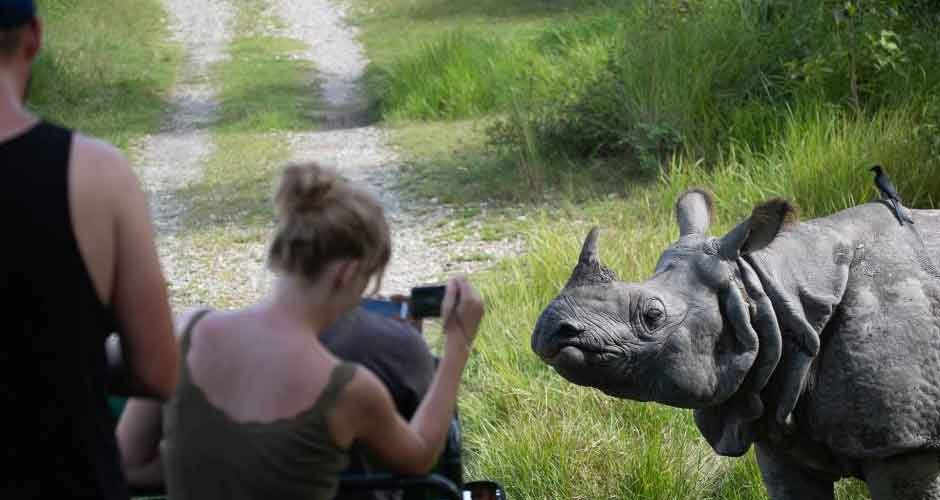Did you know that every time you book an eco-tour or visit a wildlife sanctuary, you might be contributing to wildlife protection? Tourism, often seen as a double-edged sword, can play a pivotal role in preserving our planet’s wildlife. This blog will explore how tourism can support wildlife protection, offering insights and examples that will resonate with local communities, small business owners, eco-tourists, and wildlife enthusiasts alike. By the end, you’ll understand the profound impact tourism can have on wildlife conservation and how you can be part of this movement.
The Symbiotic Relationship Between Tourism and Wildlife Conservation
Tourism and wildlife conservation might seem like odd bedfellows, but they share a symbiotic relationship. Responsible tourism can funnel much-needed funds into conservation efforts. This symbiosis ensures that both wildlife habitats and tourism industries thrive. For instance, safari tours in Africa often contribute a significant portion of their earnings to wildlife reserves, ensuring that animals have a protected space to roam.
Economic Incentives for Local Communities
One of the most compelling reasons for communities to engage in wildlife-friendly tourism is the economic benefit. By attracting tourists, local businesses can thrive, creating jobs and boosting the economy. This economic incentive encourages communities to protect their natural surroundings. For example, in Costa Rica, eco-lodges and guided nature tours have significantly boosted local economies while promoting conservation.
Education and Awareness
Tourism also serves as a powerful educational tool. Visitors learn about the importance of wildlife conservation and take these lessons back home. This heightened awareness can lead to greater support for conservation initiatives globally. Educational tours, such as those offered in places like the Galápagos Islands, provide hands-on learning experiences about the delicate balance of ecosystems.
Funding Conservation Projects
The revenue generated from tourism can directly fund conservation projects. National parks, wildlife reserves, and marine sanctuaries often rely on entrance fees and donations from tourists to finance their operations. For instance, the revenue from tourism in Yellowstone National Park helps fund various wildlife protection programs, including those for endangered species.
Reducing Human-Wildlife Conflict
Tourism can also help mitigate human-wildlife conflicts. By providing alternative livelihoods through eco-tourism, communities are less likely to engage in activities that harm wildlife, such as poaching or habitat destruction. Projects in India, for example, have shown that when local communities benefit financially from tiger tourism, incidents of tiger poaching decrease.
Promoting Sustainable Practices
Eco-tourism promotes sustainable practices that benefit both the environment and the community. Sustainable tourism practices ensure that natural resources are used responsibly, preserving them for future generations. Nordic Valley, known for its commitment to sustainability, is a prime example of how tourism can coexist with nature. By adopting green practices, they’ve created a model for other businesses to follow.
Partnering with Conservation Organizations
Tourism operators often partner with conservation organizations to amplify their impact. These partnerships can provide additional funding, expertise, and manpower for conservation projects. For instance, many tour operators in Africa partner with organizations like the World Wildlife Fund to support anti-poaching initiatives.
Creating Conservation Jobs
Tourism creates jobs that are directly involved in conservation efforts. From park rangers to wildlife guides, these jobs not only provide income but also foster a culture of conservation. In places like Australia, conservation jobs created through ecotourism have helped protect endangered species such as the koala.
Encouraging Eco-Friendly Infrastructure
The tourism industry can drive the development of eco-friendly infrastructure. Green buildings, renewable energy, and waste management systems are often part of eco-tourism projects. This infrastructure benefits wildlife by reducing pollution and habitat destruction. For example, eco-resorts in the Maldives are designed to minimize environmental impact while providing luxurious experiences for guests.
The Role of Technology in Conservation Tourism
Technology plays a crucial role in modern conservation efforts. Drones, satellite imaging, and data analytics help monitor wildlife populations and track illegal activities. These technologies are often funded by tourism revenue, enhancing conservation capabilities. In Africa, drone technology funded by tourism has been instrumental in combating poaching.
Community-Led Conservation Initiatives
Community involvement is essential for successful conservation. Tourism can empower local communities to lead conservation initiatives. By involving locals in decision-making and management, these initiatives are more likely to succeed. In Kenya, community-led conservancies have been successful in protecting wildlife while providing economic benefits to the community.
The Future of Wildlife Tourism
The future of wildlife tourism lies in sustainable and responsible practices. By continuously improving and adapting, the tourism industry can ensure that it supports, rather than harms, wildlife conservation. Innovations in eco-tourism, such as carbon-neutral travel options and virtual wildlife experiences, are paving the way for a more sustainable future.
Conclusion
Tourism has the potential to be a powerful force for good in the realm of wildlife conservation. By supporting economic incentives, funding conservation projects, reducing human-wildlife conflict, and promoting sustainable practices, tourism can help protect our planet’s precious wildlife. Whether you’re a local community member, a small business owner, an eco-tourist, or a wildlife enthusiast, you have a role to play in this movement. Together, we can create a future where tourism and wildlife conservation go hand in hand.
For those interested in making a positive impact, consider visiting places like Nordic Valley, where sustainability meets adventure. Every step you take toward responsible tourism is a step toward a brighter future for our planet’s wildlife.












